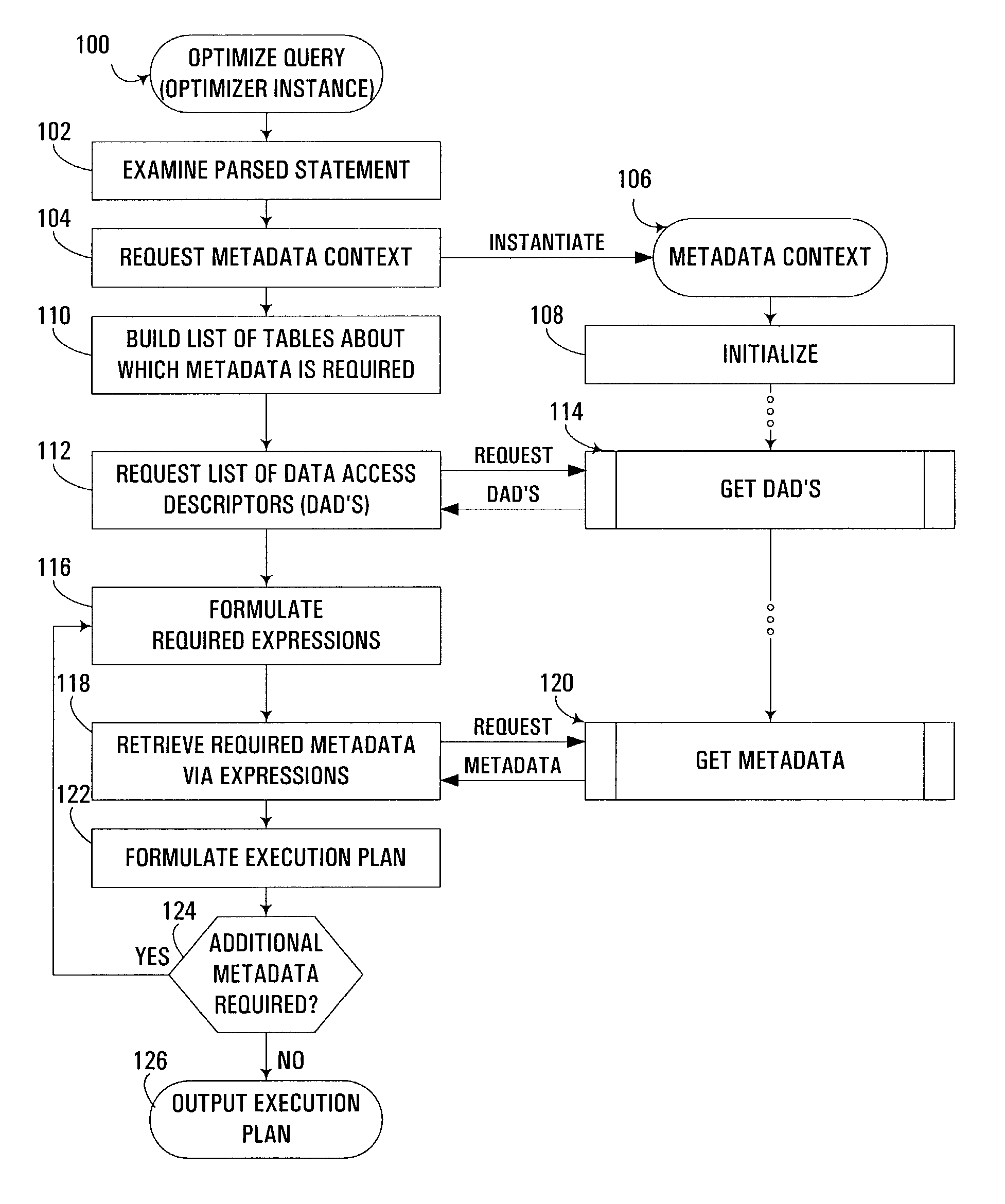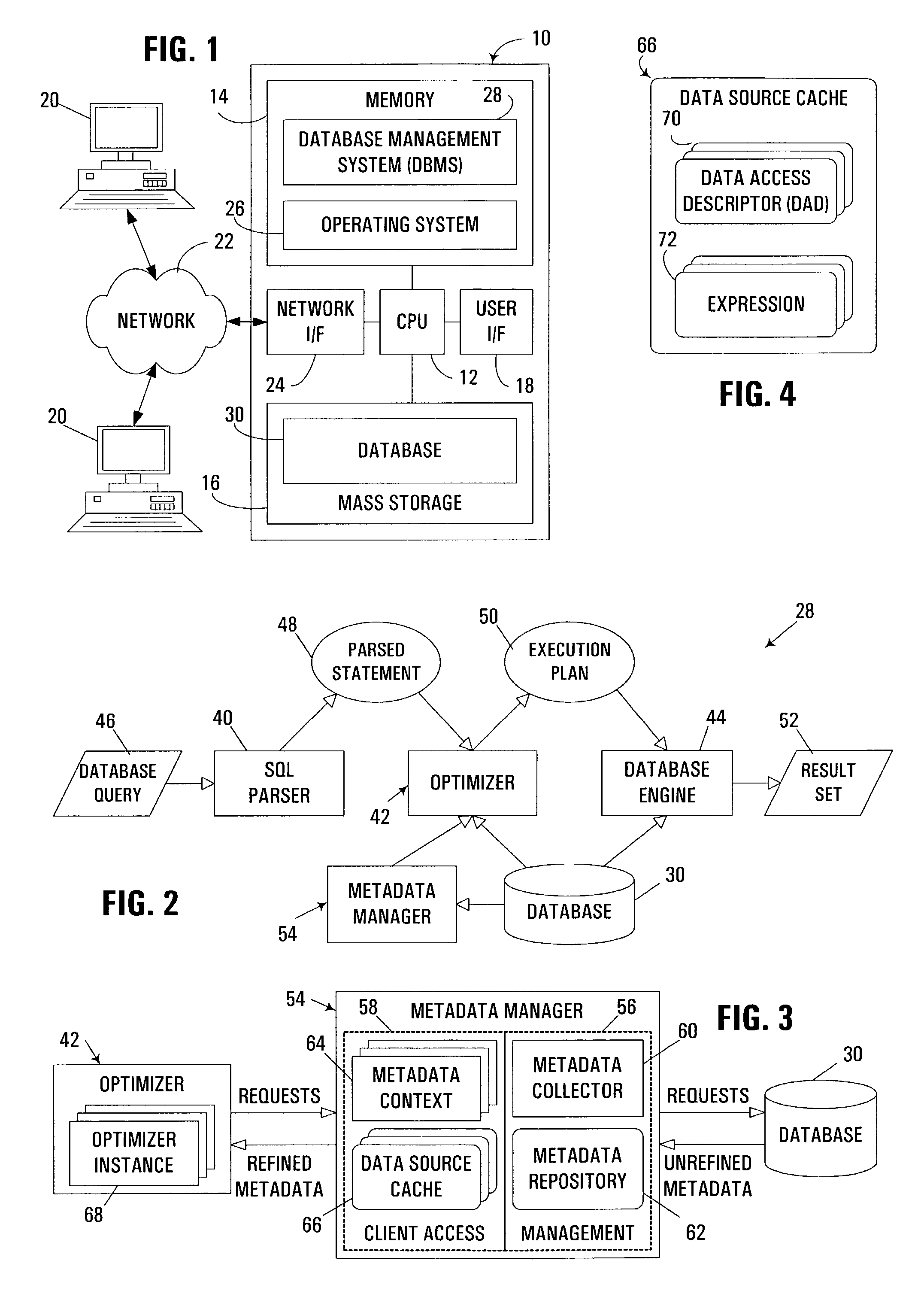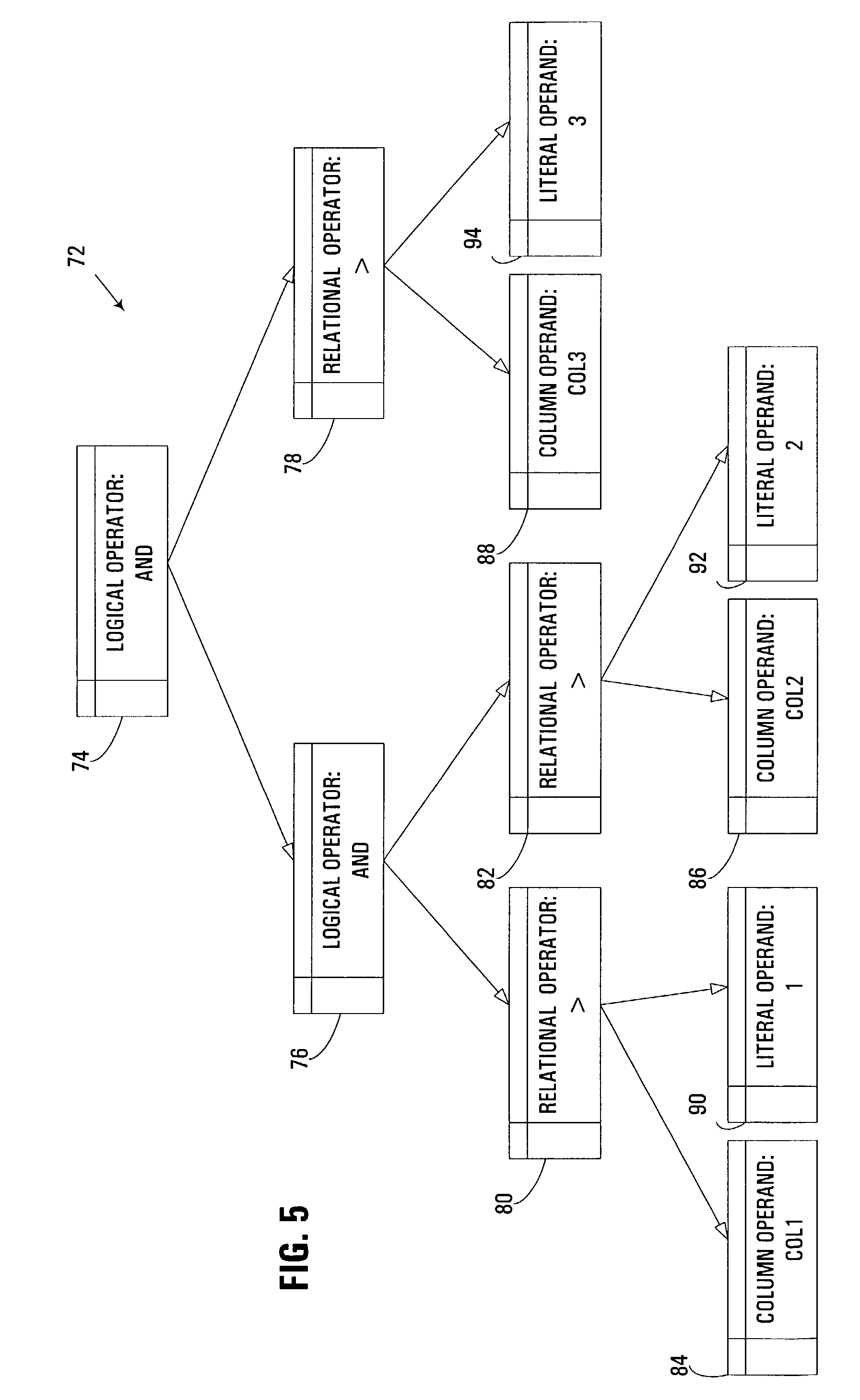Metadata manager for database query optimizer
a database and metadata manager technology, applied in the field of database management systems, can solve the problems of increasing the amount of computing resources required to manage such a database, requiring enormous resources to handle the heavy workload placed on such systems, and further increasing information volume and workload. the effect of improving metadata consistency
- Summary
- Abstract
- Description
- Claims
- Application Information
AI Technical Summary
Benefits of technology
Problems solved by technology
Method used
Image
Examples
Embodiment Construction
[0034]The embodiments discussed hereinafter utilize a metadata manager to facilitate the collection of metadata from a database, and to supply such metadata to a plurality of optimizer instances in connection with the optimization of database queries. As discussed hereinafter, a metadata manager may be configured to handle the tasks of collecting, refining, retrieving and / or maintaining metadata for one or more databases, thus off-loading responsibility for such tasks from individual optimizers or optimizer instances that make use of that metadata. As a result, the overhead associated with generating cost estimates for each individual query optimization is often reduced. Moreover, by centralizing metadata and making the metadata available to multiple instances of an optimizer, metadata consistency and reuse is substantially improved. As an additional matter, by implementing metadata handling functionality outside of optimizer instances, improvements to metadata collection, refinemen...
PUM
 Login to View More
Login to View More Abstract
Description
Claims
Application Information
 Login to View More
Login to View More - R&D
- Intellectual Property
- Life Sciences
- Materials
- Tech Scout
- Unparalleled Data Quality
- Higher Quality Content
- 60% Fewer Hallucinations
Browse by: Latest US Patents, China's latest patents, Technical Efficacy Thesaurus, Application Domain, Technology Topic, Popular Technical Reports.
© 2025 PatSnap. All rights reserved.Legal|Privacy policy|Modern Slavery Act Transparency Statement|Sitemap|About US| Contact US: help@patsnap.com



